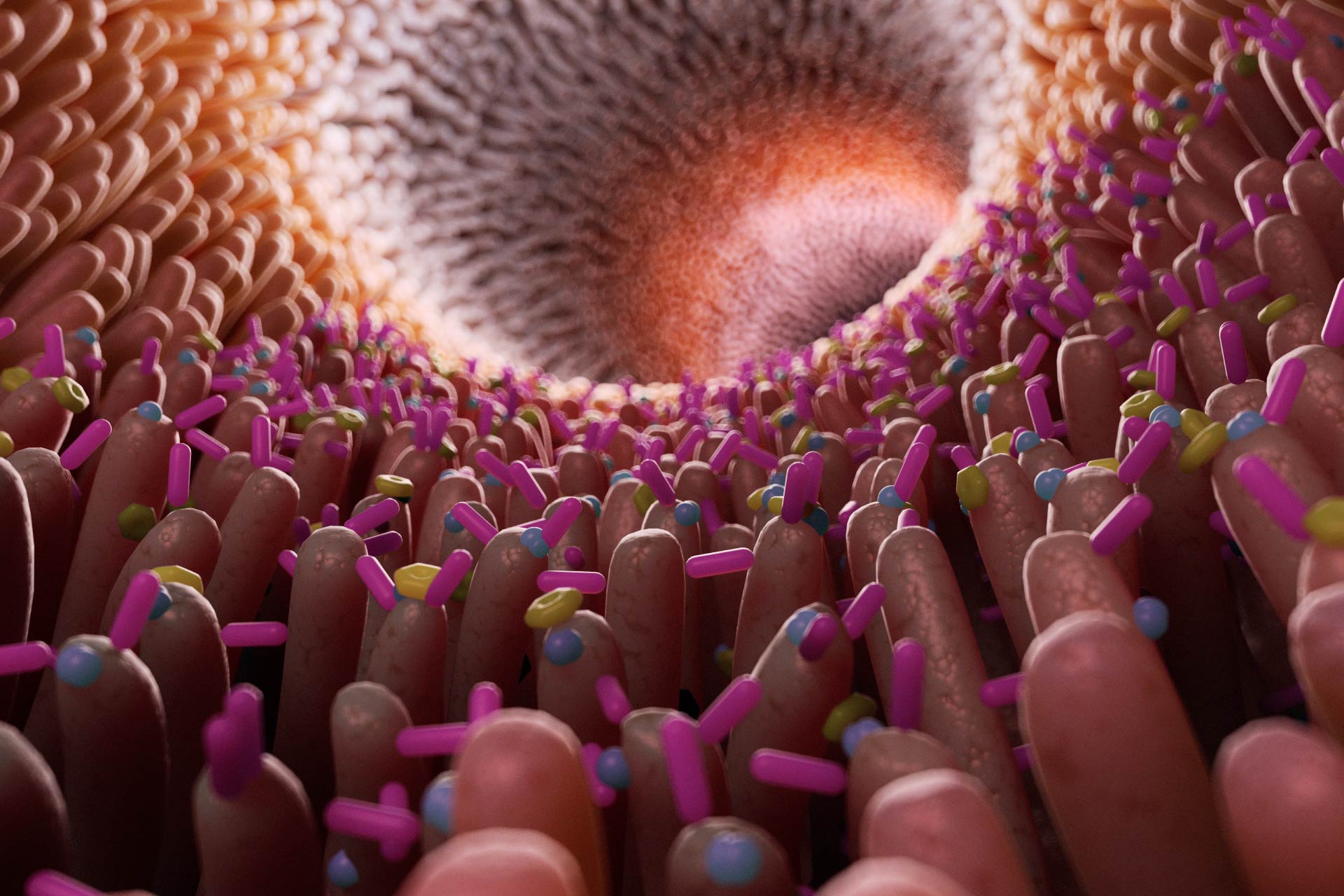• Diverse binding
• Beads applications
What is already known on this topic
The human gut is populated by different microbial species that establish competitive or cooperative relationships with one another. Glycan-mediated adhesion is one of the primary way by which bacteria increase their access to nutrients. For example, fibers in human diets contain polysaccharides embedded within plant cell wall fragments with which gut microbes interact, but little is known about how these bacteria bind to these food particles.What this research adds
Using labeled glass beads with various bound glycans, researchers have examined how Bacteroides and Parabacteroides strains derived from the human gut interact with distinct dietary polysaccharides. The results showed differences in how gut microbes bind to food particles, depending on the bacterial strain and the type of particle. Feeding glycan-covered beads to mice confirmed the diversity and specificity in glycan binding.Conclusion
The findings could facilitate analyses of how bacterial species that occupy the same physical space interact. The study could also advance the development of microbiota-based diagnostics.
Gut bacteria increase their access to nutrients by adhering to food particles, but little is known about how microbes bind to the particles. Now, an analysis of more than 160 Bacteroides and Parabacteroides strains reveals different binding properties that depend on the bacterial strain and the food particles.
The findings, published in Cell Reports, could help to define functional diversity as it relates to factors including diet and health status, the researchers say. The results, they add, could also have diagnostic and therapeutic implications.
To develop an approach to uncover differences in adhesion of different gut microbes, Jeffrey Gordon at Washington University School of Medicine and his colleagues generated a collection of artificial food particles composed of tiny magnetic beads each coated with a different polysaccharide, or glycan. The glycan preparations included algal polysaccharides, mammalian glycans, and fiber preparations isolated from fruits, vegetables, grains, and legumes. Then, the researchers used the glycan-coated beads to screen 163 human-gut-derived Bacteroides and Parabacteroides strains.
Diverse binding
Of the Bacteroides and Parabacteroides strains screened, 60 showed glycan-specific binding to one or more glycan-coated bead types. Six strains belonging to Bacteroides thetaiotaomicron and B. fragilis species bound to all bead types, including control beads that were not coated with glycans.
The screen revealed strain-to-strain differences in binding, the researchers found. For example, B. salyersiae strain VPI-2828 mostly bound to levan beads, whereas B. salyersiae 23369 did not. Different strains of B. thetaiotaomicron adhered to either galactan or mucin, and B. ovatus strains bound to either oat hull fiber or galactan and xyloglucan.
To validate their findings, the researchers collected sequencing and imaging data. The results of these additional analyses confirmed the binding specificity, at the level of both the microorganism and the glycan. This suggests that that the bead-based screening approach can be applied to communities containing different microbes, the researchers say.
Beads applications
Compared to in vitro experiments, there might be more factors that modulate adhesion in the gut. For this reason, the researchers used mice to validate the glycan-specific adhesion characteristics observed in their assays.
Feeding glycan-covered beads to mice mostly recapitulated the specificity in glycan binding. However, a difference with previous results was that, in the mouse gut, the researchers observed clumps of different galactan-coated beads with bacterial cells surrounded by neighboring beads. This suggests that the bacteria aggregated the individual particles in the gut.
The bead-based approach could have applications in different areas, including for selecting strains whose binding abilities are minimally influenced by nutrient availability, pH, and growth phase, the researchers say. “Glycan-coated beads could also be exploited to intentionally foster competition between microbes when both competitors adhere to the same carbohydrate,” they add.
What’s more, bead-based assays would generate glycan-binding patterns that could serve as biomarkers for predicting risk for gut microbiota perturbations or help to quantify the recovery from such perturbations, including those triggered by antibiotics or diarrheal diseases, the researchers say.









